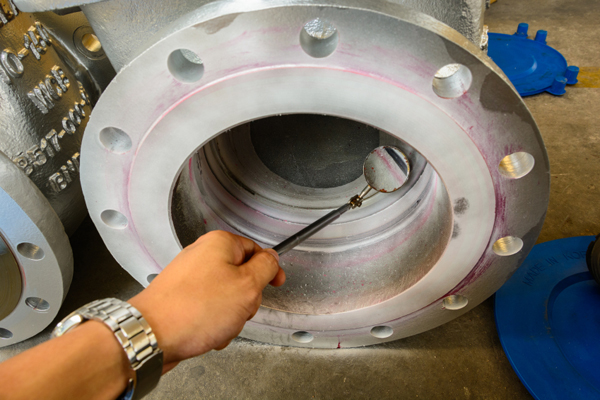Revealing the Diverse Array of Welding Providers and Their Advantages
As industries continue to require and advance accuracy in their production procedures, the relevance of welding solutions has come to be increasingly pronounced. From the versatility of arc welding to the performance of MIG welding, and the complex work accomplished through TIG welding to the precision of laser welding, the selection of welding techniques available is substantial.
Types of Welding Solutions
One usual type is MIG welding, additionally recognized as Gas Metal Arc Welding (GMAW), which makes use of a cord electrode to sign up with steels together. One more extensively made use of technique is TIG welding, or Gas Tungsten Arc Welding (GTAW), which utilizes a non-consumable tungsten electrode to develop a specific and tidy weld.
In addition, there is Stick welding, or Shielded Steel Arc Welding (SMAW), which is known for its simpleness and effectiveness, especially in gusty or exterior problems. This approach is generally utilized in building and pipeline welding. There is Flux-Cored Arc Welding (FCAW), which is a flexible process appropriate for thick materials and can be made use of in both automatic and semi-automatic applications. Each sort of welding solution has its toughness and is picked based on aspects such as product kind, density, and the details needs of the project handy.
Advantages of Arc Welding
Arc welding uses a wide range of advantages that provide to various industrial needs and requirements. Furthermore, arc welding is recognized for its high welding rates, which can dramatically increase efficiency in manufacturing procedures.
One more key benefit of arc welding is its capability to develop resilient and strong welds. Arc welding also creates accurate and clean welds, decreasing the need for extra finishing work.
Advantages of MIG Welding
With an emphasis on efficiency and sturdiness in welding processes, MIG welding presents a distinct set of advantages that match the flexibility and toughness located in arc welding. MIG welding, or Gas Steel Arc Welding (GMAW), is known for its rate and simplicity of use. The process includes feeding a cord electrode via a welding weapon, which is after that thawed and utilized to join the base materials with each other. One of the crucial benefits of MIG welding is its high welding speeds, making it a favored selection for jobs that need quick turn-around times.
Furthermore, MIG welding produces tidy welds with minimal splatter, minimizing the need for comprehensive cleanup after the welding process. The adaptability of MIG welding allows for welding a large range of materials, consisting of aluminum, stainless steel, and light steel. This flexibility makes MIG welding ideal for different industries, from auto to construction.
In addition, MIG welding is known for its high deposition prices, suggesting even more material can be transferred in a much shorter quantity of time contrasted to other welding procedures. This results in enhanced performance and cost-effectiveness for jobs that need huge volumes of welds. On the whole, the advantages of MIG welding make it a valuable technique for achieving sturdy and reliable welds across various applications.

Checking Out TIG Welding Benefits
TIG welding, also understood as Gas Tungsten Arc Welding (GTAW), provides a distinct collection of benefits that provide to accuracy and control in welding applications. One of the primary benefits of TIG welding is its capability to create high-quality, clean welds without the demand for filler material.
Moreover, TIG welding can be made use of on a large variety of steels, including stainless steel, aluminum, copper, and titanium, making it a flexible option for numerous welding jobs. The procedure additionally allows for welding in different positions, providing adaptability in challenging welding situations.
Advantages of Laser Welding

Another benefit of laser welding is its adaptability in functioning with a large array of materials, including steels, plastics, and also dissimilar materials. This adaptability makes laser Discover More Here welding appropriate for diverse sectors such as automobile, aerospace, electronic devices, and clinical tools. The non-contact nature of laser welding also minimizes contamination, making it a environmentally friendly and clean welding method.
Moreover, laser welding allows intricate and elaborate weld geometries that might be challenging to achieve with typical welding strategies. This ability opens new design possibilities and enables for the production of lighter and a lot more innovative elements - Welding Inspection Service. In general, the benefits of laser welding make it a favored selection for many production applications seeking Going Here high precision and effectiveness
Verdict

Finally, the diverse array of welding solutions offer various benefits in numerous markets. Arc welding supplies solid and long lasting welds, while MIG welding uses efficiency and versatility. TIG welding guarantees accurate and clean welds, and laser welding gives high accuracy and rate. Each kind of welding solution has its own advantages and applications, dealing with various requirements and requirements in the welding industry.
From the adaptability of arc welding to the efficiency of MIG welding, and the detailed job completed with TIG welding to the precision of laser welding, the variety of welding techniques readily available is substantial. One usual type is MIG welding, likewise understood as Gas Metal Arc Welding (GMAW), which uses a cable useful site electrode to sign up with steels together. Additionally, arc welding is known for its high welding rates, which can substantially raise productivity in making processes.With a focus on effectiveness and longevity in welding processes, MIG welding offers an unique set of advantages that complement the convenience and stamina discovered in arc welding.TIG welding, also understood as Gas Tungsten Arc Welding (GTAW), uses a distinctive collection of benefits that cater to precision and control in welding applications.